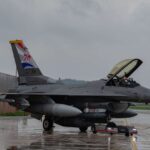London, Paris (The Washington Post), March 11 (12/03). They don’t fully control the skies, despite possessing one of the world’s most advanced air forces. Their ground assault on the capital has been inching along for days, with a miles-long convoy marooned by supply problems. And all the while, they are taking heavy losses — both in equipment and personnel, as estimates suggest more dead troops than America suffered during 20 years of war in Afghanistan.
Two weeks after Russian forces streamed into neighbouring Ukraine following months of buildup, evidence is mounting that the invasion has not gone to plan — and that Russia’s much-vaunted military may not be the formidable force once feared.
“The word I’m hearing from everybody in the government who is watching this is ‘surprising.’ My own word is ‘shocking,’” said Barry Pavel, a former top Pentagon official who is now senior vice president at the Atlantic Council. “It’s shocking how incompetent they are in the basics of joint military operations by an advanced country.”
That doesn’t mean Russia won’t ultimately seize Kyiv and topple the Ukrainian government. And it doesn’t mean Ukraine won’t pay a horrific price in both military and civilian casualties, as it continues to do daily.
But the stumbling pace of Russia’s assault since President Vladimir Putin ordered troops into Ukraine late last month — marked by apparent confusion among commanders plus viral images of downed Russian planes and tanks set alight — has reset expectations for how the conflict will unfold.


And it probably has raised the ultimate cost — to both Ukraine and Russia — of any eventual Russian victory, especially as Moscow appears to have abandoned plans for a lightning advance, relying instead on shelling besieged cities and launching unguided bombs from the sky.
“What’s the number of civilians killed by days and days and days of artillery? What’s the number that leads to a more favourable Russian position?” Pavel asked. “I’m really worried about that.”
While the invasion has turned into a bloody slog in the face of fierce Ukrainian resistance, Russian forces have continued to make slow advances around multiple cities — particularly in the south, where several major cities appear in danger of falling in the coming days. Only one major city, Kherson, has so far been taken by the Russians.
In the north, progress has been tougher to discern.
The British Defense Ministry said Friday that Russia appeared to be repositioning its troops north of the capital and could soon launch new operations against Kyiv, after a protracted stretch in which a long column of Russian vehicles had stalled. Satellite images, meanwhile, appeared to show the column breaking up into smaller contingents.
A senior U.S. defence official, who spoke on the condition of anonymity because of the sensitivity of the issue, had said Thursday that leading elements of that advance were nine miles from the centre of Kyiv, down from about 12 miles for the prior several days.
The official described the movement of the column as “creeping” and said it was “very difficult” to predict how long it could take for Russian forces to make a more serious movement. Another advance on Kyiv from the east was just under 20 miles from the city centre.
Airstrikes, meanwhile, targeted sites in western Ukraine, authorities said Friday, signalling the possible expansion of the war beyond the country’s east and centre. As of Thursday, the Russians had launched 775 missiles at Ukraine since the invasion began, the senior defence official said. The number continues to climb by a few dozen per day.
But Britain’s Defense Ministry said Thursday that there had been a “notable decrease” in Russian air activity over Ukraine in recent days. In an intelligence briefing, officials said the slowdown probably was due to the “unexpected effectiveness and endurance of Ukrainian air defence forces.”
Officials added that the large Russian column north of Kyiv had “made little progress in over a week and is suffering continued losses.”
British Defense Secretary Ben Wallace told Parliament on Wednesday that Russia had nearly twice the number of battalion tactical groups at its disposal than did Ukraine when the war began, and that air superiority tilted the balance even further toward an “overwhelming” Russian advantage. But Wallace said nearly all of Moscow’s objectives in Ukraine have remained unfulfilled.
“President Putin’s arrogant assumption that he would be welcomed as a liberator has deservedly crumbled as fast as his troops’ morale,” Wallace said.
Ukrainian officials have held a series of news conferences in recent days in which captured Russian soldiers have said they regretted their parts in the war and did not know they would be invading Ukraine until a day before the attack began.
Assessing the exact number of Russian losses in combat has been complicated by the fog of war and the difficulty of interpreting a steady string of photos and videos flashing across social media that depict weapons and vehicles that were seized by Ukrainian forces, destroyed or abandoned.
The Ukrainian military posted on Facebook on Wednesday that since the invasion began, the Russians had lost 12,000 people, 526 vehicles, 335 tanks, 123 artillery systems and 81 helicopters. If those numbers are accurate, the Russians have lost nearly 7 per cent of the 190,000 troops they had arrayed at Ukraine’s border before the invasion began.
It was not immediately clear whether the losses of soldiers include both dead and wounded troops, as well as those taken as prisoners of war.
On Tuesday, senior U.S. intelligence officials said they assessed that 2,000 to 4,000 Russian soldiers have been killed, while adding the caveat that they have “low confidence” in those numbers based on the limited information they have.
Even the lower American estimate would mark an extraordinary loss of life for the Russian military, which was expected to overwhelm Ukrainian forces. During the entire 20-year U.S. war in Afghanistan, 2,461 U.S. troops died. About an additional 4,500 U.S. troops were killed in the U.S. war in Iraq from March 2003 to December 2011, according to Defense Department statistics.
Michael Kofman, director of Russia studies at CNA, a think tank outside Washington, said the U.S. figure probably is closer to the truth than the Ukrainian one, which he said appears to be exaggerated. Still, he said, that scale of loss is significant — especially when coupled with the loss of hundreds of vehicles, including about 160 tanks, according to open-source reporting he has reviewed.
“Probably we’re going to start looking at the exhaustion of their force in the next several weeks,” Kofman said. “They’re probably going to reorganize and replenish.”
Replenishing is something Russia can still do. After an erratic showing by the Russian military during a brief war in the republic of Georgia in 2008, Putin went on a spending binge. Moscow has spent about $154 billion annually on defense in recent years, according to Russian state media, though analysts caution that both corruption and a lack of transparency in the Kremlin make it difficult to assess that figure.
“Yeah, they’ve lost a lot of equipment. But they have a tremendous amount of equipment to begin with, and many of the things they’ve lost are actually pretty replaceable,” Kofman said, noting that Russia still possesses the majority of its best jets, all of its submarines and a variety of other weapons.

The senior U.S. defence official said Thursday that Russia has “greater than 90 per cent of their available combat power” still available for use in Ukraine. The official added that the Pentagon has seen no signs of the Russians sending reinforcements.
The past two weeks have shown that just because Russia has the tools of war, that does not mean commanders know how to effectively use them.
François Heisbourg, a French political analyst who used to advise President Emmanuel Macron on national security, said the Russian advances have been strikingly limited.
“They’ve only taken one regional capital out of the 26 which were free of Russian influence before Feb. 25,” Heisbourg said.
And with a fight looming against dug-in Ukrainian troops in each of the cities that remain, it is unclear whether Russia has the capacity — or the will — to succeed.
“The logistics are pathetic. The soldiers are definitely not motivated,” he said. “It’s not what you would call a steady advance. There is actually very little terrain occupied.”
Dominique Trinquand, a retired French general and former head of the French military mission to the United Nations, said the Russians are primarily gaining ground in the south of Ukraine, where there appear to be fewer Ukrainian troops.
The Russians have a strong footprint in that part of the country, including an accumulation of tanks, artillery and protected infantry. “And they are attacking from two sides, from Crimea and from Donbas,” Trinquand said.
He said he expects the Ukrainian city of Mariupol to fall to the Russians within the next four or five days. Other Ukrainian cities in the south, including Odessa, are also at risk of Russian advances. “In Odessa, they will be able to attack from the sea, from the land and from the air,” he said.
Trinquand said Kyiv — where a large-scale evacuation of civilians is underway — will be far trickier. He does not expect Kyiv to be bombed in the same way as Syria’s Aleppo was destroyed. It is more likely, he said, that Russia will use the military pressure it’s already putting on the capital as a bargaining chip in negotiations with Ukraine, “meaning: ‘We’ve captured the south, we are putting pressure on the capital, and now let’s talk,’” he said.
After a call between Macron and Putin last week, a senior French official said his country’s assessment is that Putin wants to take control of the entire country.
But Trinquand said he is not sure that is the Russians’ aim.
“They’ve got roughly 200,000 troops now, to occupy a country which is as large as France,” he said. “They don’t have the forces.”
Nor, apparently, do they have the dominance in the skies that had been widely forecast.
Malcolm Chalmers, deputy director general of RUSI, a London-based think tank, said he’s been surprised at the “very poor performance” of the Russian air force, which has yet to knock out all Ukrainian air assets and defenses — something he had thought would take a matter of days.
The Russian air force, although old, consists of several hundred high-end fixed-wing aircraft that are roughly equivalent to their Western counterparts. But the Russians, he said, “don’t seem to be able to coordinate the use of them together, and deconflict them and ensure they aren’t shooting each other.”
Still, he cautioned against underplaying Russia’s strength. It may not have taken the skies or advanced quickly on the ground, but Russia does have the firepower to do immense damage to Ukraine.
“Having painted the Russians as 10 feet tall compared with Ukrainians, now some people are painting them two feet tall,” Chalmers said. “It’s somewhere in between. They are still a formidable adversary.”
Adam reported from London and Noack from Paris.
















